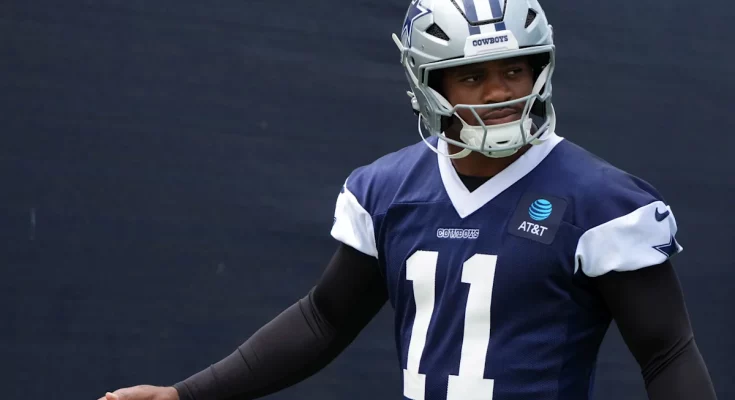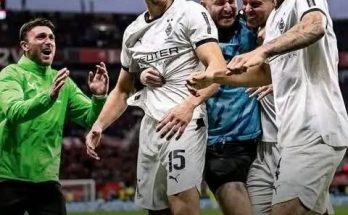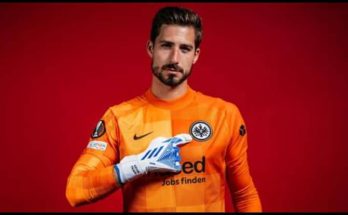The very idea of Micah Parsons, a generational talent, a whirlwind of pass-rushing fury and defensive versatility, leaving the Dallas Cowboys is enough to send shivers down the spine of even the most stoic fan in Texas. It’s a scenario that seems almost unfathomable, yet the whispers, born from the often-contentious dance between star players and the notoriously tight-fisted Cowboys front office, have grown into a roaring debate. The recent public back-and-forth, with Parsons reportedly expressing a desire to be elsewhere due to stalled contract talks and perceived disrespect from the team’s negotiation tactics, has poured gasoline on an already smoldering fire. Now, the New York Jets, a franchise perpetually searching for a game-changer to elevate their defense to truly elite status, are being proposed as a potential landing spot in a trade package that would undoubtedly send shockwaves through the entire NFL landscape. This isn’t just about a trade; it’s about the seismic shift of a top-tier player, the ramifications for two distinct franchises, and the very nature of modern NFL contract disputes.
For the Cowboys faithful, the thought of Parsons in green and white is nothing short of sacrilege. Since his arrival as a first-round pick, he has transcended expectations, becoming the undisputed leader of their defense, a relentless force whose impact extends far beyond mere statistics. He collapses pockets with terrifying speed, chases down running backs sideline-to-sideline, and often seems to be in multiple places at once, disrupting opposing offenses with an unmatched motor and instincts. His presence alone elevates the play of everyone around him, forcing offensive coordinators to dedicate multiple resources to slowing him down, which in turn frees up other pass rushers and linebackers. To lose such a cornerstone, especially to a team in another conference but one that still represents a competitive threat for top-tier talent and perception, would be an unmitigated disaster, a wound that would take years to heal and potentially set the franchise back considerably. The outcry from the fan base would be deafening, a cacophony of disappointment and anger directed squarely at a front office that has often been criticized for its handling of star player contracts. Jerry Jones’s recent public statements, downplaying Parsons’s trade request as mere negotiation tactics and dismissing any notion of losing sleep over it, only serve to further inflame an already tense situation, leading many to believe that the owner is once again prioritizing his negotiating leverage over the contentment of his star players.
From the Jets’ perspective, however, this proposed trade represents the ultimate “swing for the fences.” While they’ve invested heavily in their defense in recent years, acquiring talents like Sauce Gardner and Quinnen Williams, adding Micah Parsons would immediately catapult them into a conversation of having the most dominant defensive front in the league. Imagine the sheer terror for opposing quarterbacks facing a pass rush that features Parsons alongside a healthy Jermaine Johnson and Quinnen Williams. The pressure would be relentless, creating opportunities for turnovers, short fields, and fundamentally altering the flow of games. The Jets’ defensive coordinator, Aaron Glenn, arriving from a successful stint with the Lions, would undoubtedly relish the opportunity to unleash Parsons in a scheme designed to maximize his disruptive abilities. While the Jets are currently undergoing a retooling process and aren’t necessarily in a “win-now” window in the same vein as some other contenders, a player of Parsons’s caliber transcends short-term considerations. At just 26 years old, he is entering his prime, a perennial All-Pro who could be the defensive anchor for the next half-decade or more. Such a move would signal a clear intent from the Jets’ new regime to build a truly formidable, long-term contender, even if it means sacrificing significant draft capital and allocating a substantial portion of their future salary cap.
The proposed trade package itself, as floated by some insiders, is intricate and reflects the high value Parsons commands. It’s unlikely to be a simple exchange of draft picks. Instead, it might involve a combination of high-value draft picks spanning multiple years, potentially including multiple first-rounders, alongside established, talented players who could fill immediate needs for the Cowboys. For instance, suggestions have included players like dynamic running back Breece Hall, who could immediately step in as a feature back for Dallas, and perhaps a promising young defensive lineman or linebacker, offering the Cowboys some plug-and-play talent to soften the blow of losing Parsons. Such a multi-faceted deal would be a true blockbuster, a testament to Parsons’s unique skill set and market value. However, the financial implications are equally significant. Parsons is due for a record-setting extension, likely looking to eclipse the deals signed by other elite edge rushers, possibly in the range of $35 million annually. For a Jets team that has already committed substantial long-term money to players like Gardner and Garrett Wilson, adding another nine-figure contract would require careful cap management and could necessitate difficult decisions regarding other key players who will soon be due for extensions. It’s a delicate balancing act between acquiring elite talent and maintaining a well-rounded roster, a challenge that the Jets’ front office would have to navigate with extreme precision.
The underlying tension that has led to this speculative trade stems directly from the Cowboys’ philosophy regarding player contracts, particularly under Jerry Jones. Historically, the Cowboys have been known for protracted, often public, negotiations with their star players. While they eventually get deals done with many of their key contributors, the process is rarely smooth, often creating friction and uncertainty. Parsons’s reported frustration seems to be less about the money itself and more about the perceived lack of respect and direct engagement from the organization, particularly Jones’s alleged attempts to negotiate directly with Parsons rather than through his agent. This approach, while perhaps a tactic employed by Jones to maintain leverage, has clearly alienated Parsons, leading him to publicly state his desire to no longer play for the team. This is a significant development, as few players, especially those of Parsons’s stature, have been so openly critical of the Cowboys’ negotiation tactics. It highlights a potential fracture in the relationship between the star player and the organization, one that might be difficult to mend, regardless of Jones’s public assurances.
For the Cowboys, the decision to even entertain a Parsons trade would be an admission of a catastrophic failure in player management. It would signify that they allowed a foundational player, arguably their most impactful defensive talent in decades, to become so disaffected that he sought a move. Beyond the on-field implications, which are immense, the optics of such a trade would be devastating for the Cowboys’ brand and their relationship with their fiercely loyal fan base. It would reinforce the narrative that the team prioritizes financial control and negotiation leverage over fostering strong, trusting relationships with its players, potentially making it harder to attract and retain top talent in the future. While Jerry Jones has famously stated that no player is untradeable, the consequences of trading Parsons would far outweigh any potential return, especially given his age and trajectory.
Conversely, for the Jets, acquiring Parsons would be a monumental statement of intent. It would demonstrate their willingness to be aggressive in pursuing elite talent and send a clear message to the rest of the league that they are serious about competing for championships. While the cost would be steep, both in terms of draft capital and salary, the potential reward of having a perennial Defensive Player of the Year candidate leading their defense for years to come is an enticing prospect. It would inject a much-needed jolt of energy and excitement into a franchise that has yearned for consistent success, and provide their new head coach with an unparalleled weapon to build his defensive scheme around.
Ultimately, whether this mind-blowing trade actually materializes remains highly uncertain. Jerry Jones’s public stance suggests a strong reluctance to move Parsons, and the Cowboys would undoubtedly demand an astronomical return. However, the public nature of Parsons’s dissatisfaction and the increasing tension surrounding his contract situation suggest that this saga is far from over. The New York Jets, with their cap flexibility and defensive needs, certainly fit the profile of a team that could make a compelling offer. If the relationship between Parsons and the Cowboys truly becomes untenable, and if the Jets are willing to pay the unprecedented price, then the football world could witness one of the most shocking and impactful trades in recent NFL history, one that would redefine the trajectories of both franchises and leave Cowboys fans reeling from the loss of their defensive superstar. The very thought, however remote, is a testament to Parsons’s immense value and the high-stakes world of NFL roster construction.



